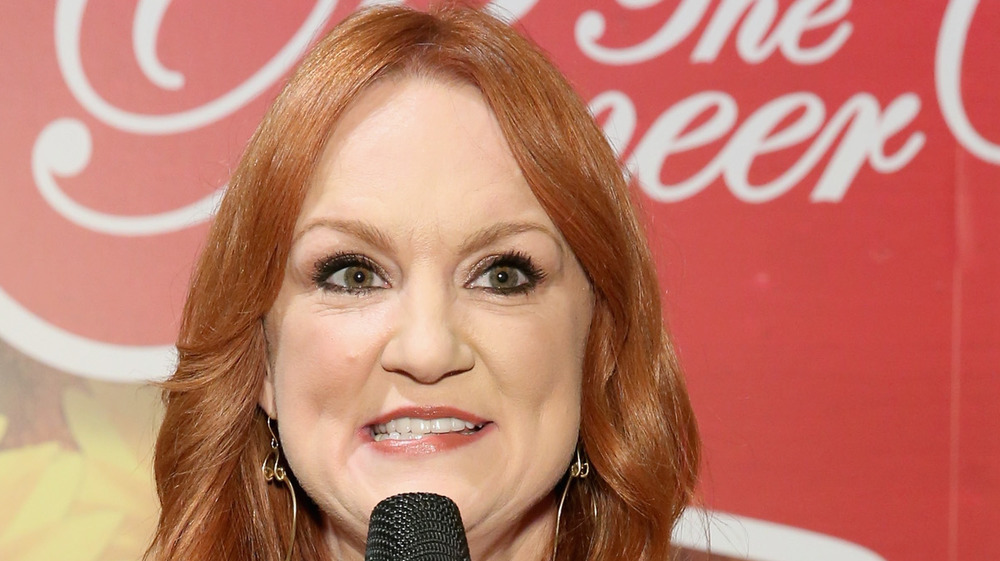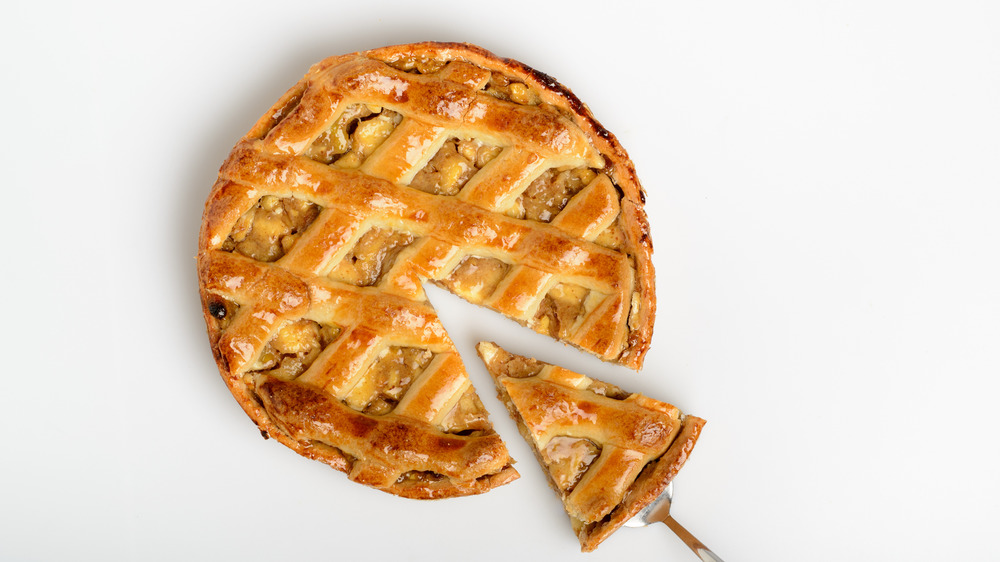The Worst Pie Crust Mistake You're Making, According To The Pioneer Woman
Few things are more satisfying than being able to say you made a pie completely from scratch. We're talking no pre-made crust and no shortcuts. That said, there are a ton of DIY pie crust recipes online, and many of them share a common ingredient: butter. As it turns out, some people feel pretty strongly about whether or not to incorporate it into homemade pie crusts, including celebrity chefs.
Butter has its pros, like adding savory flavor and helping form light, flaky pie crust layers (via Sally's Baking Addiction). On the other hand, the downside of butter is it has a lower melting point than other types of fat, like oil or shortening. "If it gets too warm, it will be too soft to handle and will tear easily. Butter is a firmer fat, so if it's too cold, your dough will be more difficult to roll out," says Epicurious, which brings us to our next point: Working with butter can either be a blessing or a curse, which is why some people choose to opt-out altogether.
What The Pioneer Woman uses instead of butter
For instance, Ree Drummond, famously known as The Pioneer Woman, steers clear of butter in her pie crust recipes. Instead, she reaches for another ingredient: vegetable shortening (via The Pioneer Woman). "For once in my life, I'm going to say this...and then it will never happen again: You must use Crisco, not butter. Butter simply will not work," she wrote in a blog post.
Vegetable shortening is usually made of hydrogenated fat from vegetable oil, according to Epicurious. Aside from being a great vegan alternative, vegetable shortening touts a higher melting point than butter and other fats, has a longer shelf life, and helps hold the crust's shape together while baking. (Seriously, try making some decorative pie crust with it, you'll see what we mean.) The downside of using shortening in lieu of butter is its lack of taste and grease-like feel, but if you're making flavorful pie, the shortening should be pretty undetectable.

